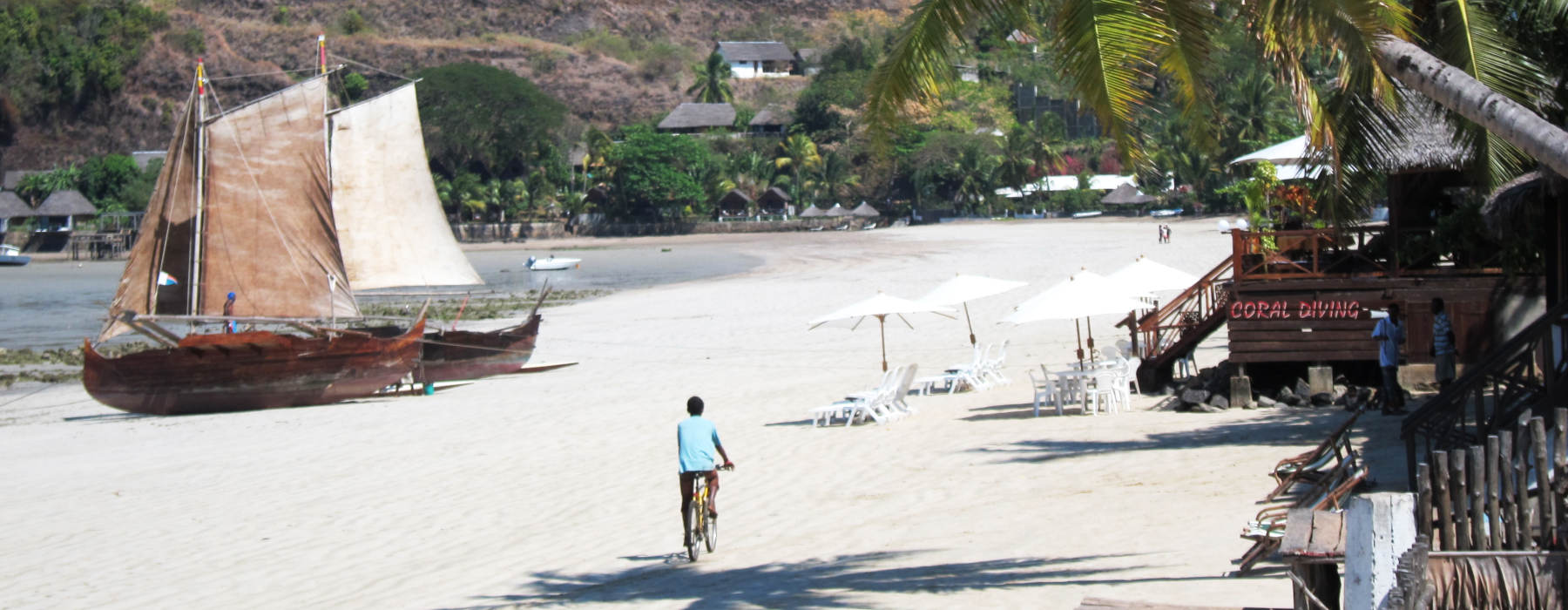Madagascar Safaris
Stat alert: a whopping 80% of the flora and fauna in Madagascar isn't found anywhere else on the planet.
This will certainly be the most original safari holiday you'll ever go on. A Madagascar safari couldn't be more different than those in other African nations; while you won't see the big game typified by safaris in neighbouring countries, you will see a hugely diverse array of wildlife spread across the verdant landscape. And the star attraction? Lemurs, lemurs and more lemurs. They vary greatly from North to South and East so where you are in the country will determine which breeds you see. As well as this, be sure to keep your eyes peeled for chameleons, birds and myriad creepy crawlies.
Amber National Park in the north of the country is a must-visit for any safari-goers; it is home to eight different types of lemur, 11 types of chameleon and 75 breeds of bird. To the south is Spiny Forest, a unique eco-region in which 95% of the plant life is endemic. It also features three distinctive endemic mammals; the white-footed sportive lemur, Grandidier's mongoose and the grey-brown mouse lemur. Needless to say any Madagascar safari will be jam-packed with incredible wildlife experiences. Perhaps the best thing about Madagascar, however, is that the flora and fauna is literally at your finger tips - combine a guided safari with some of your own exploration. Forget night-drives, head out in the evening with just a head torch and your own two feet to see the phosphorescent glow of a sleeping chameleon and, you guessed it, more lemurs!
Madagascar also makes for the perfect beach and bush combination. Having explored the country's flora and fauna, head to the immaculate beach retreats of the north west and indulge in some well-earned R&R.
Whale Watching in Madagascar
Madagascar's phenomenal wildlife is not just restrained to land. Head to this wonder-country between June and the end of September to witness one of the most fascinating spectacles on the planet. Large groups of humpback whale make their annual migration from Antarctica and end up in the sea around Sainte Marie on the country's north eastern coast.
The sheltered waters around Ile St Marie are the perfect spot for whale watching; the humpback whales gather to show off their quite spectacular courtship rituals, as well as calving and nursing their young. Humpbacks weigh in at up to 45 tonnes and reach 15 metres in length and whale watching in Madagascar is a really special experience for anyone with an iota of interest in sea-life, and wildlife in general.
Those who prefer to keep their feet on terra firma won't have to miss out either because the whales can be seen from pretty much everywhere on Ile St Marie. However, the best way to see them is by hopping aboard a fast motor launch with a whale watching specialist, who will be able to take you to all the best spots and give a detailed insight into the whales and their behaviour patterns.
There's also some great whale watching to be had on Nosy Be, an island off the north-west coast of Madagascar, where whales, dolphins and whale sharks all dive together.
Kitesurfing in Madagascar
Fort Dauphin, the first French settlement in Madagascar, is now a haven for watersports enthusiasts.
Anyone with a penchant for watersports and a desire to inject a little action into their trip to Madagascar need look no further than this region on the south-east coast, which is the perfect place for experienced kitesurfers to let loose. Averaging 300 days of wind a year, ideal conditions for kitesurfing are all but guaranteed. A backdrop of wide bays and lake systems means it's pretty easy on the eyes to boot. While there are numerous spots in Madagascar for kitesurfing, Fort Dauphin is most certainly the pick of the bunch.



